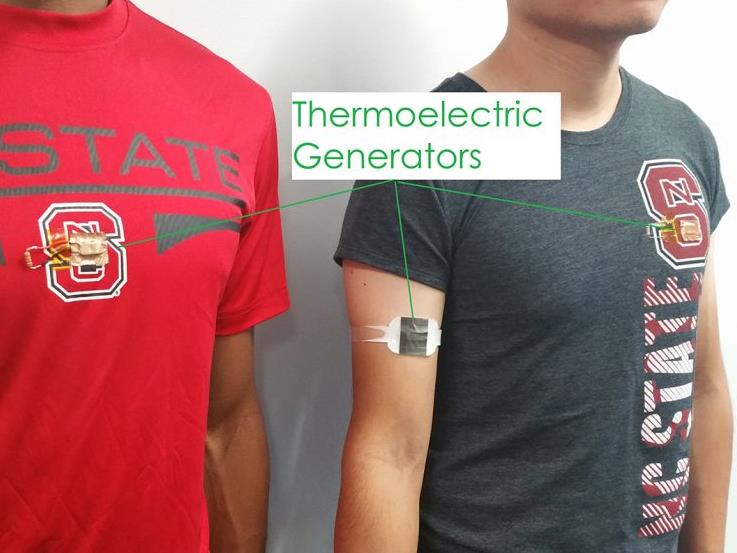Scientific design turns people into massive batteries
Health monitoring devices could soon run on energy generated by the human body.
Words by Patrice Sweeney
Researchers at North Carolina State University have developed emerging prototypes that are powered by heat from a person’s mass. The designs are far more efficient and lightweight than previous wearable thermoelectric generators (TEGs), and measure a modest 2mm.
Compared to pre-existing models, NC State’s TEGs are magnanimous in their conversion of heat into electricity. Their resourcefulness results in up to a whopping 20 microwatts of power per centimetre squared (µW/cm2), while their predecessors could produce up to 1 µW/cm2.
Furthermore, the research university utilises a technology that veers away from heat sinks - thermal management devices that are cumbersome and heavy. Thus, their TEGs feature better performance and manageability than other design concepts.

Image courtesy of Daryoosh Vashaee
They’re created as part of NC State’s Advanced Self-Powered Systems of Integrated Sensors and Technologies (ASSIST).
Explains Daryoosh Vashaee, an associate professor of electrical and computer engineering at NC State:
“The goal of ASSIST is to make wearable technologies that can be used for long-term health monitoring, such as devices that track heart health or monitor physical and environmental variables to predict and prevent asthma attacks”.
Researchers discovered that the heat-harvesting system experienced optimal performance on the upper arm, where there is consistent contact between the skin and the TEG monitor.
The size of the prototype can also be manipulated according to the power needs of a particular device.
*Main image courtesy of Daryoosh Vashaee












